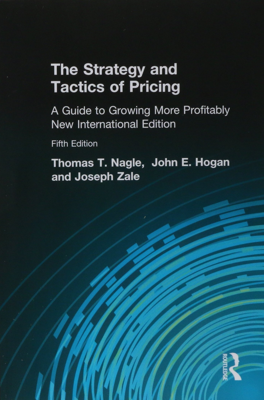Costs
The Role of Costs in Pricing
Cost management is crucial in pricing strategies, underscoring the importance of understanding when and how costs influence pricing decisions. Pricing should never be solely dictated by costs; it should rather be informed by a synthesis of cost considerations and customer value insights. Effective pricing strategies begin by evaluating what customers are willing to pay and then deciding which products to produce and which markets to serve based on aligned cost structures.
Incremental and Avoidable Costs
Successful pricing hinges on identifying relevant, incremental, and avoidable costs—the costs directly affected by a change in pricing or production levels. Incremental costs vary with changes in output and directly influence the pricing strategy, distinguishing them from fixed costs, which do not change with the level of production or sales. Avoidable costs, on the other hand, are those that a company can choose not to incur, as opposed to sunk costs, which have already been committed and cannot be recovered.
Practical Application and Misconceptions
The chapter emphasizes the importance of disregarding misleading accounting practices that focus on average or sunk costs for pricing decisions, advocating instead for a focus on current and incremental costs. It critiques typical accounting approaches for often misleading management with oversimplified cost views and encourages a more nuanced understanding of variable, fixed, and semi-fixed costs as related to specific pricing decisions. This reframing allows companies to avoid common pricing pitfalls by basing their strategies on costs directly relevant to additional units produced or sold due to changes in pricing.
Managing Costs Through Activity-Based Costing (ABC)
Activity-Based Costing (ABC) is promoted as a method to achieve more accurate estimations of costs that change with activity levels, helping managers understand how different activities and the scale of operations affect overall costs. ABC aids in distinguishing between costs directly associated with production processes and those linked to other operational activities, enabling finer control over pricing strategies that must respond to varied production scales and customer demands.
Strategic Implications of Contribution Margin
Understanding the percent contribution margin, which measures how much of each sales dollar contributes to the profit after variable costs are covered, is crucial. A higher contribution margin indicates greater leverage between sales volume and profitability, guiding decisions on pricing adjustments. By effectively managing and understanding these margins, companies can better strategize on introductory pricing, discounts, and premium pricing scenarios, aligning their strategies more closely with market dynamics and competitive pressures.
Insights on Transfer Pricing
The chapter also touches on the often-overlooked aspect of transfer pricing within companies or with upstream suppliers. Effective management of these internal or supplier-related price structures can lead to more competitive pricing strategies by avoiding the unnecessary burdens of fixed costs on product prices. Suggestions include structuring payments to suppliers that differentiate between fixed cost recovery and incremental cost pricing, enabling more aggressive and responsive market pricing.
Conclusion on Costs and Pricing Strategy
In sum, the chapter frames costs not as the determinants of pricing but as crucial factors to be strategically managed within the broader context of market conditions and customer value. Proper understanding and application of cost management principles can enhance a company’s pricing flexibility and competitiveness, ultimately impacting its profitability and market positioning. The encouragement is towards a dynamic and informed approach to pricing, avoiding static methods that fail to capture the complex interplays of costs, market demand, and competitive factors.
